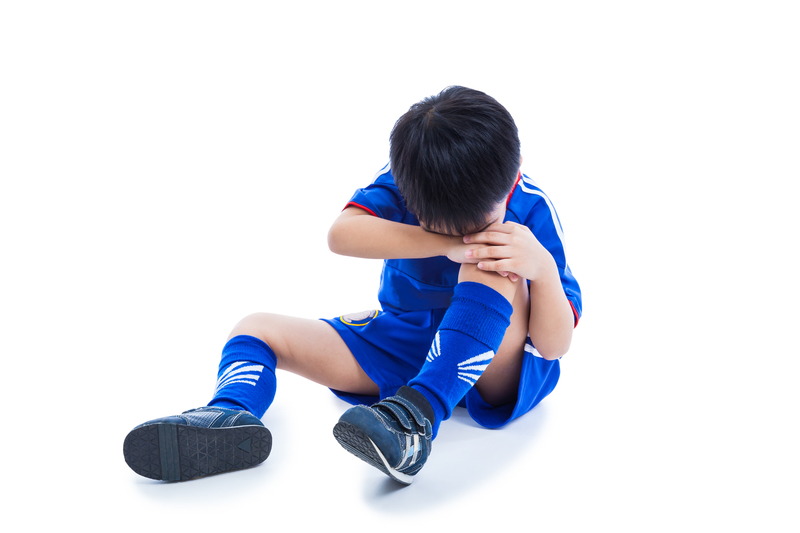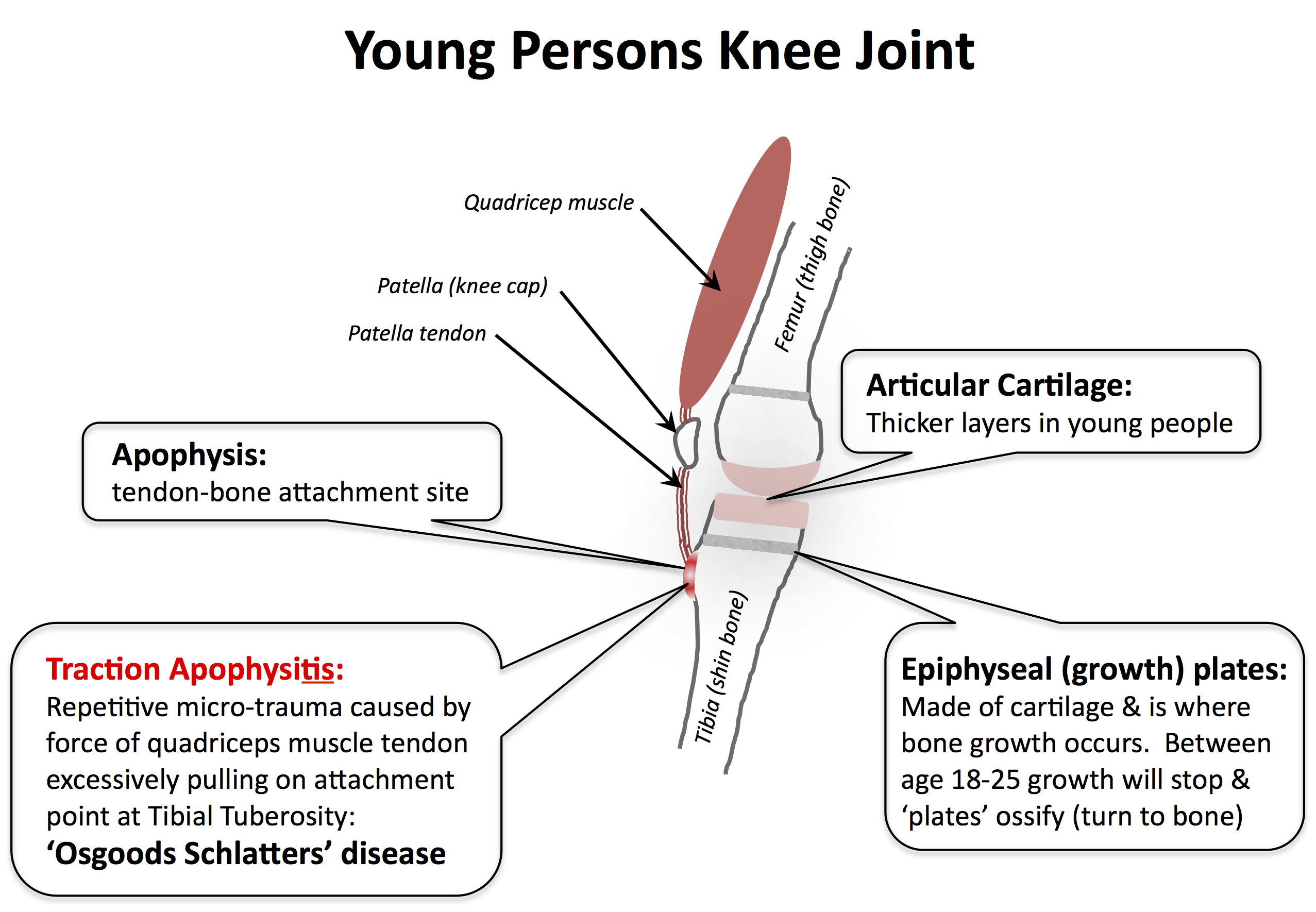In sport, of course, children and adolescents can get many of the same sports injuries as adults (thankfully less frequently). However there is a relatively common type of injury that occurs in young people and often called ‘growing pains’. Excessive physical activity, fast growth rates and the different structure of bone can all contribute to an overuse injury called: Traction Apophysitis
Traction Apophysitis
The point that a tendon directly attaches to cartilage prior to maturity is called an apophysis. In adults this is rare as most attachment sites have turned to bone (ossified). However, in children a large majority of tendon attachments will be cartilage, relatively soft, therefore making the attachments prone to repetitive micro-trauma. The most common cause is two-fold:
- A period of rapid bone growth which exceeds the speed of muscle growth.
- ‘Excessive’ training which increases the traction or pulling forces the attachment points of muscle(s).
Poor biomechanics, improper technique or lack of rest between training and competition will all contribute to the problem. A traction apophysitis generally occurs gradually without any particular history of injury. It can occur and persist after a single traumatic event (typically a forceful stretch of a muscle).
A medical practitioner can discount other uncommon but more serious conditions such as infection, tumors, arthritis or stress & avulsion fractures.
Signs & Symptoms
- Localised pain / tenderness
- May or may not be swelling.
- Pain frequently made worse by ‘impact’ exercise such as running and jumping.Treatment
- In moderate/severe cases player will not be able to complete the game / training session and is difficult to weight bear for an hour or so.
- In mild cases the soreness or tenderness comes on during physical activity but quickly dissipates after stopping.
Common Sites of this Injury
- Top of the shin – “Osgoods Schlatters Disease”
- Below the knee cap – “Sinding-Larsen-Johansson Disease”
- Above/on heel – “Severs Disease”
- At the elbow – “Little leaguer’s elbow”
- Outside of foot, base of little toe – “Iselin’s Disease”
- Possible sites, but more uncommon are muscle attachment points around the hip and pelvis
Treatment
A program of muscle stretching and graded rehab exercise is recommended. In severe cases all weight-bearing activity should cease until symptoms subside. In mild cases a reduction in the amount of sport being played can be tried. As a rule of thumb, playing can be allowed if the child is not limping.
If it is ‘osgoods schlatters disease’ for instance, focused sports therapy (soft tissue work and stretching) on the quadriceps muscles is recommended. All muscles of the lower limb and pelvis should be assessed to check for contributory factors such as strength or flexibility imbalances. Training modification should be discussed with the sports coach.
For more information or to make an appointment please click here or contact us on 01628 914751.



 Enter your name and email and request our free ebook: 7 Habits of Highly Effective Runners
Enter your name and email and request our free ebook: 7 Habits of Highly Effective Runners